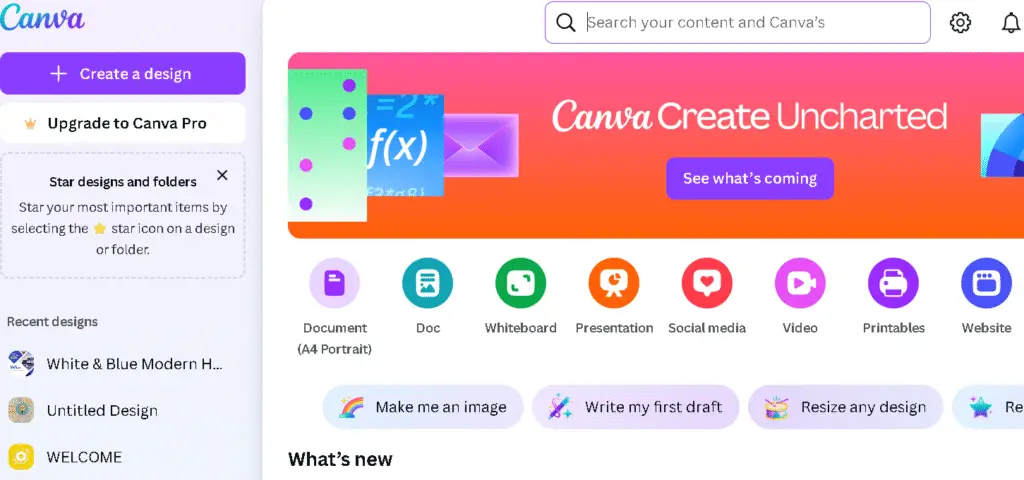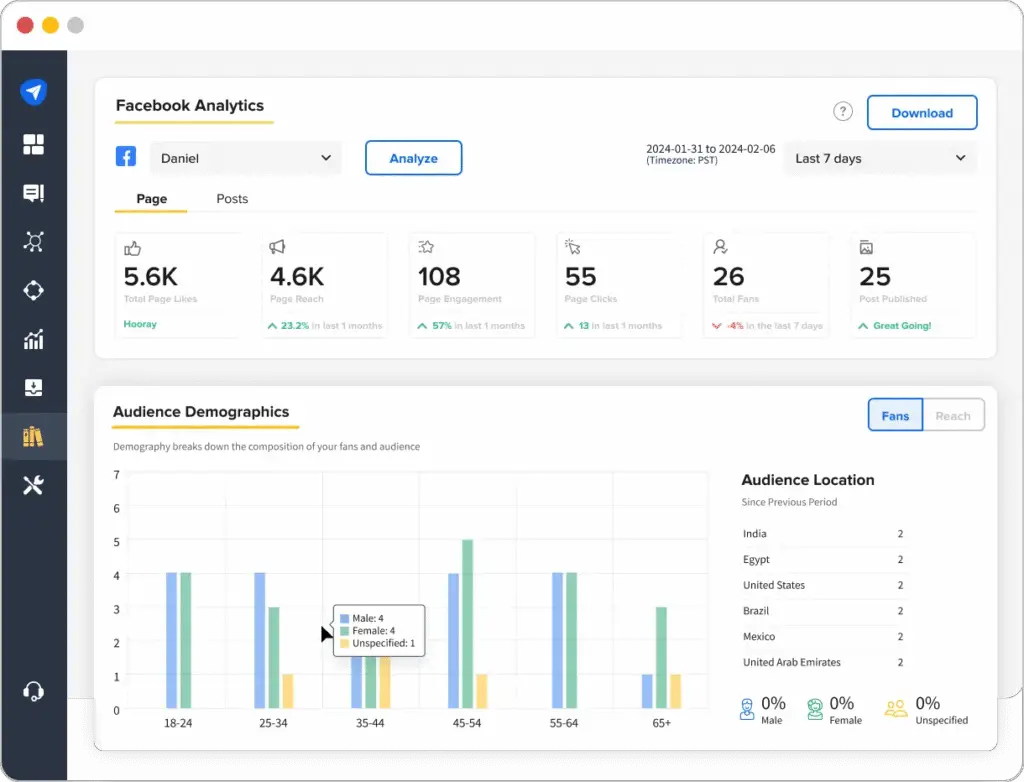In an age where users swipe through content in milliseconds, how can brands make people pause, engage, and take action? The answer lies in a well-crafted social media marketing strategy—a structured plan that aligns brand storytelling with business goals, ensuring that every post, campaign, and reply contributes to measurable outcomes.
Without a roadmap, businesses risk aimless content, wasted ad budgets, and a disjointed brand presence. But with a strategic approach, social media transforms from a time-consuming obligation into a high-performance marketing channel that builds community, generates leads, and fuels brand loyalty.
Let’s dive deep into what defines an effective social media marketing strategy—and how today’s most innovative brands use it to stay ahead.
What is a Social Media Marketing Strategy?

A social media marketing strategy is a comprehensive plan that outlines how a brand will use platforms like Instagram, TikTok, LinkedIn, X (Twitter), YouTube, and Threads to achieve specific business outcomes. It defines content themes, target audiences, platform-specific goals, engagement methods, performance metrics, and content calendars.
It’s not just about posting often—it’s about posting with purpose, precision, and personality.
Key Components of a Social Media Strategy:
- Audience personas: Demographic and psychographic profiles of your target followers.
- Platform selection: Choosing the right channels based on audience behavior.
- Content pillars: Core themes and categories of content.
- Tone and voice: How your brand “talks” to your audience.
- Engagement tactics: Ways to interact, including comments, polls, DMs, and UGC.
- KPIs: Metrics to track success (engagement rate, CTR, shares, conversions, etc.)
- Tools: Scheduling, analytics, design, and listening platforms.
🔥 Example: Chipotle’s TikTok strategy tapped into Gen Z culture with viral campaigns like the #GuacDance challenge. This UGC-driven trend invited fans to share avocado-themed dance videos, earning millions of views and reinforcing Chipotle’s cool, fun-loving brand identity.
Why a Social Media Strategy Matters
An intentional social media strategy fuels long-term growth, not just short-lived likes. It allows businesses to build lasting relationships, stay culturally relevant, and link engagement to ROI.
Here’s how a structured plan pays off:
1. Aligning Social Media with Business Goals
Your social media should never operate in a silo. A strategy that connects directly to core business objectives—whether it’s increasing in-store traffic, launching a new product, or driving webinar sign-ups—ensures that every post plays a role in the bigger picture.
✅ Case in Point: Currys
UK tech retailer Currys integrated social media with retail goals through staff-driven videos. By leaning into humor and real employee stories about tech trends (like air fryer obsessions), Currys created relatable, entertaining content that boosted TikTok engagement and drove foot traffic to stores.
2. Building a Memorable Brand Voice
Your brand voice is your personality online. Whether it’s quirky, helpful, rebellious, or sincere, consistency is key. A strategic approach ensures that the tone matches your values and resonates with your ideal audience.
✅ Example: Surreal Cereal on LinkedIn
Surreal made waves on LinkedIn—a platform not known for humor—by publishing bold, meme-worthy carousels like “THIS WAS A BIG MISTAKE.” The posts weren’t promotional, but they were unforgettable, subtly reinforcing the brand’s playful nature and helping it stand out in a crowded market.
3. Reaching and Engaging the Right Audience
A smart strategy involves deep knowledge of who you’re talking to. It’s not just about knowing their age or location—it’s about understanding what makes them tick, scroll, and share.
✅ Example: Beyond Meat on Threads
After facing criticism around product health claims, Beyond Meat repositioned itself on Threads with a laid-back, chatty voice that mimicked group texts and relatable thoughts. This helped re-establish trust with younger, skeptical audiences in a fresh way.
🔍 Tip: Use tools like SparkToro, Meta Audience Insights, and Hootsuite to build better audience profiles.
4. Learning From Competitors (Before They Go Viral)
Keeping an eye on the competition offers priceless lessons. A sound strategy includes competitive analysis to identify gaps, strengths, and viral trends early—before they dominate your industry.
✅ Example: McDonald’s & the Grimace Shake Trend
When fans turned Grimace’s purple shake into a horror meme, McDonald’s didn’t miss a beat. They joined the joke, amplifying user content and riding the wave of viral relevance. Brands that monitor trends in real time are better equipped to act fast and win attention.
📊 Use tools like Brandwatch, Sprout Social, and Rival IQ to analyze competitor content and engagement.
5. Boosting Efficiency Through Content Organization
Content creation can be chaotic—unless it’s organized. A strategy brings structure through editorial calendars, automation, and collaboration workflows, enabling marketers to plan weeks or months ahead while leaving room for spontaneity.
✅ Example: Cisco’s AI-Powered Employee Content
Cisco’s TikTok strategy revolves around real employees explaining tech like AI and cybersecurity in creative, digestible ways. From office tours to case studies, Cisco batches content, schedules efficiently, and keeps everything aligned through storytelling, ensuring consistency and high production value.
🧰 Recommended Tools: Notion for planning, Later or Buffer for scheduling, Canva for design, and Google Drive for assets.
6. Turning Engagement into Sales
Likes are nice, but sales are better. A good strategy bridges the gap between social content and conversions through clear CTAs, influencer campaigns, affiliate links, and product tagging.
✅ Example: Away Luggage’s Viral Calvin Klein Parody
To ride the Jeremy Allen White x Calvin Klein buzz, luggage brand Away created a spoof with a suitcase wearing underwear—literally. The hilarious, timely parody got massive traction and reminded audiences that brand relevance can lead to real sales when done right.
Social Media Strategy Tips for 2025

To build a future-ready social media strategy, follow these key tips:
- Focus on storytelling, not selling.
- Repurpose content across platforms (Reel → TikTok → Pinterest Idea Pin).
- Collaborate with micro-influencers for higher engagement and trust.
- Use data analytics weekly to adjust strategies.
- Humanize your brand through behind-the-scenes and employee content.
- Join platform-native trends while staying authentic.
- Invest in community management—comments and DMs are the new customer service.
How to Build a Winning Social Media Marketing Strategy
A well-structured social media strategy creates a consistent brand presence, boosts audience engagement, and drives measurable outcomes. The core of an effective strategy includes setting clear goals, understanding your audience, evaluating competitors, and organizing a robust content plan.
Step 1: Define Goals and Identify KPIs

Your social media strategy should begin with setting precise, achievable goals that align with your overall business objectives. Use the SMART framework—specific, measurable, attainable, relevant, and time-bound—to guide your planning.
Example: Nike’s “You Can’t Stop Us” campaign is a powerful case of goal-driven storytelling. The initiative boosted brand visibility and inspired community interaction, with millions of social shares and high engagement metrics like impressions and shares.
Your KPIs should mirror your objectives. If your focus is brand awareness, monitor reach and impressions. For lead generation, keep an eye on conversion and click-through rates.
Step 2: Know Your Audience

Effective marketing stems from knowing who you’re speaking to. Analyzing demographics, interests, and behaviors ensures your content resonates.
Example: Gymshark’s success lies in understanding its fitness-savvy audience. By collaborating with influencers like Nikki Blackketter, the brand connects with millions of health-conscious followers, fostering trust and driving sales through personalized engagement.
Step 3: Study Your Competitors

Analyzing competitors helps uncover what works—and what doesn’t. This insight allows you to stand out by refining your approach.
Example: Glossier tailors its strategy by observing major players like Sephora. After identifying the value of user-generated content, Glossier developed its own community-focused model, sourcing product ideas from its social media followers.
Step 4: Craft a Content Strategy and Posting Plan

A well-thought-out content strategy keeps your messaging consistent and on-brand. Prioritize content that educates, entertains, or informs your audience while staying true to your brand values.
Example: Canva’s “Droptober” campaign blended creativity and updates, offering engaging and informative content. The brand mixes tutorials, product news, and user content to build excitement and consistency.
Use scheduling tools to post at optimal times and maintain a steady presence. A content calendar will help you plan ahead and stay aligned with broader marketing goals.
Step 5: Optimize Your Profiles
Each social media profile should reflect your brand’s identity clearly and professionally. Complete all profile details, use high-resolution visuals, and maintain consistency in tone and design.
Example: Salesforce uses LinkedIn to share thought leadership content, while Nike showcases visual storytelling on Instagram. Optimizing bios with keywords, adding action buttons, and activating business features improves discoverability and engagement.
Regular audits help ensure that your profiles remain up-to-date, visually appealing, and aligned with your objectives.
Step 6: Build and Manage a Content Calendar

A content calendar helps streamline planning, avoid gaps, and ensure regular engagement. Map out post types (educational, promotional, user-generated, etc.), publication times, and frequency.
Example: HubSpot’s content mix includes industry tips, blogs, and customer stories, while Starbucks ties posts to seasonal offerings like the Pumpkin Spice Latte, driving high engagement during key periods.
Step 7: Engage with Your Community
Social media success is built on genuine interaction. Responding to comments and messages promptly humanizes your brand and builds loyalty.
Example: Wendy’s witty replies on X (Twitter) keep the brand top-of-mind through humor. Netflix also excels at tapping into trends and memes to connect with its audience.
Encourage user-generated content through contests or shoutouts. GoPro effectively showcases fan content, turning customers into brand ambassadors. Measure engagement and sentiment to continuously evolve your community strategy.
Step 8: Track Metrics and Optimize
Analytics provide the insights needed to refine your strategy. Monitor metrics like follower growth, engagement, CTRs, and conversions to assess performance.
Example: Airbnb tailors its content by tracking what visuals perform best. Meanwhile, Spotify’s “Wrapped” campaign uses user data to fuel personalized, shareable content that boosts brand love and virality.
Leverage A/B testing to optimize content formats, headlines, and creatives. Constant iteration is key to staying relevant and maximizing ROI on social media.
By following these steps, you can develop a social media marketing strategy that not only increases visibility but also fosters meaningful connections with your audience.
Top 4 Tools to Power Up Your Social Media Marketing Strategy
To execute a successful social media strategy, marketers need tools that streamline scheduling, offer insightful analytics, and boost audience engagement. Whether you’re a solo creator or managing campaigns for multiple clients, choosing the right tools can make all the difference. Here are five standout platforms to elevate your social media efforts.
1. Buffer – Simplified Social Management for Creators & Small Brands

Buffer is a user-friendly solution designed to help solo marketers and small teams plan, publish, and analyze their social content. With a clean interface and practical features, it’s ideal for those seeking simplicity without sacrificing performance.
Notable Features:
- Content Ideas Hub to store inspiration and curated content.
- Start Page Builder for creating link-in-bio landing pages.
- AI tools for writing and refining captions with minimal effort.
- Basic performance analytics to monitor post reach and interactions.
- Free plan available for up to 3 channels.
Best Suited For:
Freelancers, solopreneurs, and startups that need an intuitive and cost-effective scheduling tool.
2. Hootsuite – Enterprise-Grade Scheduling and Listening

Hootsuite is a robust platform built for larger teams and brands that require deep analytics, social listening, and multi-platform publishing. It’s a powerful choice for businesses with complex workflows.
Key Features:
- Social listening dashboard to monitor brand mentions, competitors, and trends.
- AI content recommendations to improve post performance.
- Detailed reports comparing brand performance with industry benchmarks.
- Custom team roles and permission settings for collaboration.
- Advanced scheduling calendar for planning weeks of content.
Best Suited For:
Mid-to-large organizations and teams prioritizing analytics and cross-functional coordination.
3. Tailwind – A Pinterest & Instagram Specialist

Tailwind is crafted for visual platforms, specifically Pinterest and Instagram. Its automation capabilities and design tools make it a favorite for brands targeting lifestyle, fashion, or visual-first audiences.
Key Features:
- SmartGuide assistant that recommends optimal posting tactics.
- Bulk post scheduling to maintain a consistent content stream.
- Pin design tools for quickly creating engaging visuals.
- Browser extension to save and schedule content from the web.
- Visual analytics to measure performance and trends.
Best Suited For:
Creators and ecommerce brands focused on Pinterest marketing and Instagram growth.
4. SocialPilot – Scalable Social Management for Agencies

SocialPilot is tailored for marketing agencies and teams managing multiple brands or clients. Its approval workflows, white-label features, and affordability make it a go-to for B2B providers.
Key Features:
- Dedicated dashboards for managing multiple clients independently.
- White-label reporting with custom branding.
- Collaborative tools for assigning roles and managing approvals.
- Scheduled reports delivered directly to clients or internal teams.
- Budget-friendly pricing for growing agency needs.
Best Suited For:
Agencies and consultants who handle multiple social accounts and need a streamlined workflow.
Final Thoughts
A strong social media strategy hinges not just on great content—but on consistent execution, audience insight, and performance tracking. Whether you’re just starting out or managing campaigns for multiple clients, investing in the right tools ensures your marketing stays on track and delivers results.
By using platforms like Buffer, Hootsuite, Tailwind and SocialPilot you can boost efficiency, increase engagement, and better align your strategy with business goals.
FAQs: Social Media Strategy Tools
Q: How frequently should brands post on social media?
A: Ideal posting frequency varies by platform. Aim for 3–5 posts/week on Instagram, daily updates on X (Twitter), and 1–2 TikToks per day for best engagement.
Q: How can businesses measure social media ROI?
A: Track metrics like engagement rate, reach, clicks, conversion rate, and follower growth. Use reporting dashboards to evaluate and adjust based on performance trends.

